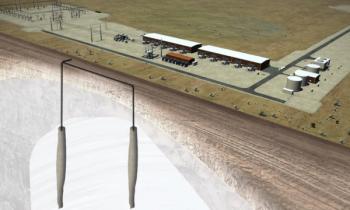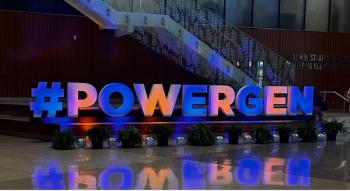
Anti-surge protection system for compressors - II
In the
The parameters affecting the anti-surge control system are discharge pressure, suction pressure, flow rate and suction temperature.
Surge control systems
Mono-point system: gas flow measured by orifice
Multi-point system: suction and discharge pressures, flow rate and suction temperatures instrumentation terminals.
Advantages of multi-point protection systems
- Various compressor parameters reading will be taken into consideration. So if there is any error or deviation in any reading, it will be compensated relative to other reading to obtain the optimum reading as an output.
- Instrumentation failure in mono-point system lead to system blindness for gas flow rate so protection is not activated (should be monitored manually by discharge pressure and suction pressure).
- Any change in gas temperature according to climate change (winter/summer) will change gas density and specific volume will not be monitored by mono-point as it monitors only gas flow. In this case, gas flow as monitored will be very high, higher than real value.
- If surge happened in this case the anti-surge protection system may not be active as the flow recorded by orifice is higher than set point of anti-surge valve while real value is lower. This is due to change in density and specific volume as a result of climate change and suction temperature change.
- For this case, the discharge speed, pressure, vibrations, radial temperature are monitored carefully to avoid surge.
- Speed is a good parameter to be compared as a compensator for gas flow rate as speed is directly proportional with flow rate.
When we ask a simple question, “How compressor running with low speed has high gas flow rate near choke limit?”
The answer is that the gas flow rate is not real and needs to be compensated with other parameters according to compressor performance curves.
Why do we use ASCS?
- The ASCS is a system added to compressor control loop in order to be safer and to overcome hazards and failures for compressor during operation.
- The ASCS should contain a group of online readings for compressor parameters to be as an input to a compressor to process them.
- The ASCS must contain a compensator, the compensator also should contain number of constant data to be installed at start of operation, and these constants are same data for compressed gas, physical and thermodynamic properties.
- The compensator must contain a number of functions to calculate some results from the online data collected in order to utilize them to make more adequate monitoring for compressor operation.
Online readings to be collected
1) Suction temperature
To ensure that it is in the accepted range as it affects the gas specific volume, axial thrust force and power consumption.
To check if there any gas leakage from downstream through damaged seal.
2) Suction pressure
To ensure that the accepted range of pressure as decrease in suction pressure can cause surge for compressor and increase in speed.
3) flow rate
To ensure that compressor is running normally with no blockage at downstream.
To ensure also that molecular weight of gas is constant.
4) Discharge pressure
To ensure that there is no blockage downstream and also to check that compressor is running at normal rated loading, (no overloading).
To check damaged seals and gas leakage.
5) Discharge temperature
To ensure that gas is compressed normally with no friction or erosion with any part inside the machine.
Constant data installed
It is some special data about the physical properties of compressed gas that will not be changed if the chemical composition of gas is changed.
Molecular weight (M)
It is constant as gas composition is constant but when gas composition changes, molecular weight changes. It increases or decreases according to change. In these cases the operating conditions of compressor change as speed change, discharge pressure and flow rate. Also these changes affect steam turbine or any prime mover driving the compressor accordingly.
Compressibility factor (Z)
The physical property of gas changes according to the changes in pressure and temperature of the gas, but it is useful to calculate the head and efficiency.
Polytrophic index (n)
The physical property of gas doesn’t change unless gas composition is constant, the power consumption for the desired head is dependent of (n), and it is useful to calculate head and efficiency.
Gas constant (R)
The physical property of gas doesn’t change unless gas composition and molecular weight are constant. It is useful to calculate head, efficiency and actual mass flow rates of gases.
Functions
Specific head (Cp)
It varies with temperature and pressure of gases, it is important to calculate power required by compressor.
Density (ρ)
As gases are compressible fluids, density varies with pressure change. The density of gas must be monitored online in case of gases affected with ambient temperature (air, ammonia).
Mass flow rate (mᵒ)
It should be constant at the rated speed of compressor but it can be changed due to uncontrollable circumstances from the upstream. So it should be monitored to calculate and monitor efficiency and power consumption.
Head (Hp)
It should be calculated online to monitor compressor performance to ensure that the compressor is delivering the required pressure or there is damage and something inside needs to be checked.
Work& power required (w)
It should be calculated online to monitor the power consumed by compressor to produce the desired head. But in cases of surge and flow reversal, the power consumption increase extremely so it should be monitored to predict any early problems.
Efficiency (η)
It should be calculated online to monitor the compressor’s overall performance as any deviation in efficiency means that there is a problem in the compressor. It is either a mechanical or operational problem, so the operation crew has to investigate early to troubleshoot problems.
All the previous items should be mounted with the compensator to collect and process these data together and get results. Compare these results with the compressor performance curve to check deviation.
In the third and concluding part of this series, the author talks about the vibration control unit and the speed controller. He also explains how constant monitoring can help in achieving optimum performance for the whole train.
(The author is Turbomachinery Manager at Abu-Qir Fertilizers Company in Alexandria, Egypt. He has a Masters Degree in Mechanical Engineering.)
Newsletter
Power your knowledge with the latest in turbine technology, engineering advances, and energy solutions—subscribe to Turbomachinery International today.




